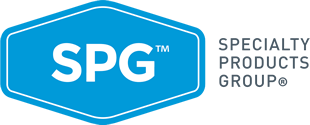Description
A ready to use formula of stabilized natural occurring nonsporogenic bacteria. These microbes provide for maximum degradation of hydrocarbons, grease & oil. Microbes eliminate man made pollutants on the surface or below. GTS converts hydrocarbon pollutants into carbon dioxide and water.
Basic Uses
Grease trap and drain maintenance, reclaim pits in car and truck equipment washes, degradation of petroleum hydrocarbons and other organics. Superior odor control. Exceptional floor cleaners, excellent for stamping plant, machine shops, septic tanks for odor, ponds & lagoons. Marine bilge tanks, ground water & soil contamination.
Major Advantages
- Goes to work immediately unlike conventional spore technology that requires 24 hour pre germination to activate.
- Complete degradation resulting in no odor.
- Reduces, FOG, BOD, COD
- Completely degrades hydrocarbons to carbon dioxide and water
- Can significantly reduce costly clean up and removal.
- Remediates secondary containment areas.
- Doesn’t harm plants or aquatic life.
- Can be sprayed on surface or injected.
- Stable in wide range of PH from 4 to 11
- Non Hazardous
- No VOC’s
- Non flammable
General Information
Available in: 1 Gallon, 5 Gallon, 55 Gallon Coverage varies from depending on job conditions Grease Traps – 20 oz/Day for regular maintenance Wash & Parts Tank 1 Gallon for every 25 gallons of cleaning liquid.
- Maintenance – 1 quart every week.
- FOG—Fatty Acids—Fat, oil and grease in water.
- BOD—Biological Oxy Demand is measure of aerobic activity that takes oxygen out of water
- COD—Chemical Oxy Demand is measure of chemical activity that takes oxygen out of water.
- GTS—GROUND TRAP SURFACE
| Appearance: | Opaque to blue liquid |
| Bacteria Type: | Stabilized Non Spore Microbes |
| Bacteria Count: | Guaranteed > 1.1 Billion Colony forming units (CFU) per gallon at time of shipment |
| Stability: | There is no reduction in viability and activity for 12 months. |
| pH (as supplied): | 6.5 – 7.5 |
| pH (use conditions): | 5 – 9.0 |
| Temperature Range: | 40 – 110 degrees Fairenheight |
| Growth: | Performs under aerobic and anoxic conditions |
| Sp. Gravity at 25 degrees Celsius: | 1.0+ 0.02 (8.33 lbs./gal.) |
| Salmonella free: | Nonpathogenic |
Cleaning Contaminated Concrete Floors Using Microbes
Cleaning contaminated floors has been a problem for the coatings industry forever. Detergents and caustics remove or disperse hydrocarbons from the surface of concrete, but do nothing for contaminants in the pores of the concrete. GTS Bacteria migrate into the pores of the concrete to totally digest oils converting them to carbon dioxide and water, eliminating adhesion problems for coating floors.
GTS will eliminate a number of contaminants, including Motor oil, Cutting oil, Hydraulic oil, Gasoline, Diesel and heating fuels, Fats (animal and vegetable), Grease, Solvents, Alcohols and sugars. Cleaning with bacteria leaves no residue, .and can be coated as soon as the floor is dry enough per the coating manufacturer moisture recommendation.
It is important to remember that GTS is not an enzyme. They are not a detergent and do not disperse oil. They are living Bactria that eat hydrocarbons. They need the hydrocarbon food source to survive. Once their food source is gone, they die out. GTS does not leave any residue
Procedure for Cleaning Concrete Floors
Step 1 – Wet the floor and apply the microbes. Water serves two purposes. The microbes need a moist climate to work, and water aids the mobility of the GTS microbes, so they have the most opportunity to come into contact with hydrocarbons.
Step 2 – Agitate. Agitation helps disperse the microbes and helps break down the oil for faster digestion. Agitate the floor periodically and keep the floor moist while the bacteria are working. The time needed for cleaning will vary between 30 minutes to several hours, depending on how much contamination there is. Keep in mind that some floors have been exposed to oil for many years, and may need a few days for the microbes to completely digest all the contamination.
Step 3 – Rinse the floor. Rinse to a drain, or rinse and shop vac the microbes from the floor. Dry the floor thoroughly and coat according to coating manufacturers recommendation (note – microbes do not etch concrete).
Potential Problems: Be sure the pH of the floor falls into a range the microbes can survive in. Chlorine bleach kills the microbes. Do not use in conjunction with products containing chlorine.
Warranty Disclaimer
The information herein is to assist customers in determining whether our products are suitable for their application. Our products are intended for sale to industrial and commercial customers. We request that customers inspect and test our products before use and satisfy themselves as to the contents and suitability. We warrant that our products will meet our written specifications. Nothing herein shall constitute a warranty expressed or implied, including any warranty of merchantability or fitness, nor is protection from any loss or patent to be inferred. The exclusive remedy for all proven claims is replacement of our materials and in no event shall we be liable for special, incidental or consequential damages.
